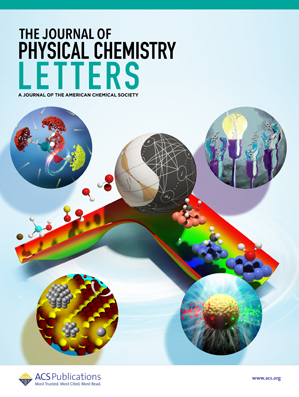Gate Voltage Regulation of Surface Properties in Polyethylenimine-Doped Indium Oxide Transistors for Enhanced Detection of Low-Concentration NO2 at Room Temperature.
IF 4.8
2区 化学
Q2 CHEMISTRY, PHYSICAL
引用次数: 0
Abstract
Nitrogen dioxide (NO2), a toxic environmental pollutant, requires high-performance sensors for ppb-level detection. While indium oxide thin-film transistors (In2O3 TFTs) show promise, conventional devices require costly vacuum equipment, unlike solution-processed spin-coating, which is suitable for scalable fabrication. Channel doping enhances gas sensing performance but degrades transistor output current. This work introduces polyethylenimine (PEI) as the electron dopant for solution-processed In2O3 TFTs. PEI provides abundant electrons for NO2 interaction, but the limited current-driving capability of resistive sensors fundamentally restricts their detection sensitivity to such low-amplitude signals. Gate voltage-regulated surface electronic states in thin films significantly enhance the current-driving capability, enabling ultrasensitive NO2 detection down to subppb concentrations. The 1% PEI-doped In2O3 TFT demonstrates a saturation drain current of 0.065 mA, representing a 1.91-fold enhancement over the undoped counterpart (0.034 mA). Furthermore, the optimized 1% PEI: In2O3 TFT achieves a 23% response toward 10 ppb NO2.室温下掺聚乙烯亚胺氧化铟晶体管表面特性的栅极电压调节增强低浓度NO2的检测。
二氧化氮(NO2)是一种有毒的环境污染物,需要高性能的传感器来检测ppb水平。虽然氧化铟薄膜晶体管(In2O3 TFTs)显示出前景,但传统的器件需要昂贵的真空设备,不像溶液加工的旋转涂层,适合可扩展的制造。通道掺杂提高了气敏性能,但降低了晶体管输出电流。本文介绍了聚乙烯亚胺(PEI)作为溶液法制备In2O3 tft的电子掺杂剂。PEI为NO2相互作用提供了丰富的电子,但电阻式传感器有限的电流驱动能力从根本上限制了其对这种低幅度信号的检测灵敏度。薄膜中栅极电压调节的表面电子态显著增强了电流驱动能力,实现了低至亚ppb浓度的超灵敏NO2检测。掺1% pei的In2O3 TFT显示出0.065 mA的饱和漏极电流,比未掺的In2O3 TFT (0.034 mA)提高了1.91倍。此外,优化后的1% PEI: In2O3 TFT对10 ppb NO2的响应达到23%。
本文章由计算机程序翻译,如有差异,请以英文原文为准。
求助全文
约1分钟内获得全文
求助全文
来源期刊

The Journal of Physical Chemistry Letters
CHEMISTRY, PHYSICAL-NANOSCIENCE & NANOTECHNOLOGY
CiteScore
9.60
自引率
7.00%
发文量
1519
审稿时长
1.6 months
期刊介绍:
The Journal of Physical Chemistry (JPC) Letters is devoted to reporting new and original experimental and theoretical basic research of interest to physical chemists, biophysical chemists, chemical physicists, physicists, material scientists, and engineers. An important criterion for acceptance is that the paper reports a significant scientific advance and/or physical insight such that rapid publication is essential. Two issues of JPC Letters are published each month.
 求助内容:
求助内容: 应助结果提醒方式:
应助结果提醒方式:


